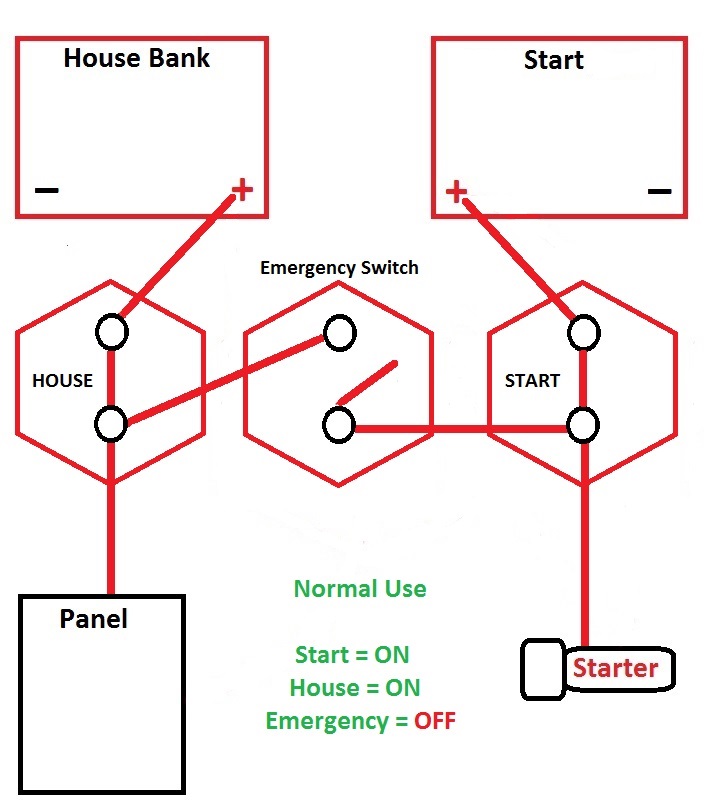When designing a house bank with four 6v golf cart batteries @ 12v (assume 200AH for each of the 2 batteries), is it better to keep the series pairs separate (two banks @200amps each) or combine the two banks in parallel, creating one bank @ 400ah?
I have read Calder's book and he recommends paralleling them and I understand why.
I have also read that paralleling batteries is not a good idea (http://continuouswave.com/whaler/reference/dualBattery.html, see section entitled "Single Engine/Dual Battery").
It seem like paralleling them is better, but how does one mitigate the risks of paralleling?
1. charge rate difference because of age: start with same age batteirs
2. unequal SOC: design a charging system that charges all four simultaneously
3. internal resistance differences among the four causing unequal charging and load supply rates: ??? how significant is this issue
4. One of the four batteries fails, causing the entire bank to fail: install a 1-both-2-off swtich to break the parallel and remove the failed pair.
5. ?? any other drawbacks to paralleling two banks batteries?
Thanks
I have read Calder's book and he recommends paralleling them and I understand why.
I have also read that paralleling batteries is not a good idea (http://continuouswave.com/whaler/reference/dualBattery.html, see section entitled "Single Engine/Dual Battery").
It seem like paralleling them is better, but how does one mitigate the risks of paralleling?
1. charge rate difference because of age: start with same age batteirs
2. unequal SOC: design a charging system that charges all four simultaneously
3. internal resistance differences among the four causing unequal charging and load supply rates: ??? how significant is this issue
4. One of the four batteries fails, causing the entire bank to fail: install a 1-both-2-off swtich to break the parallel and remove the failed pair.
5. ?? any other drawbacks to paralleling two banks batteries?
Thanks






